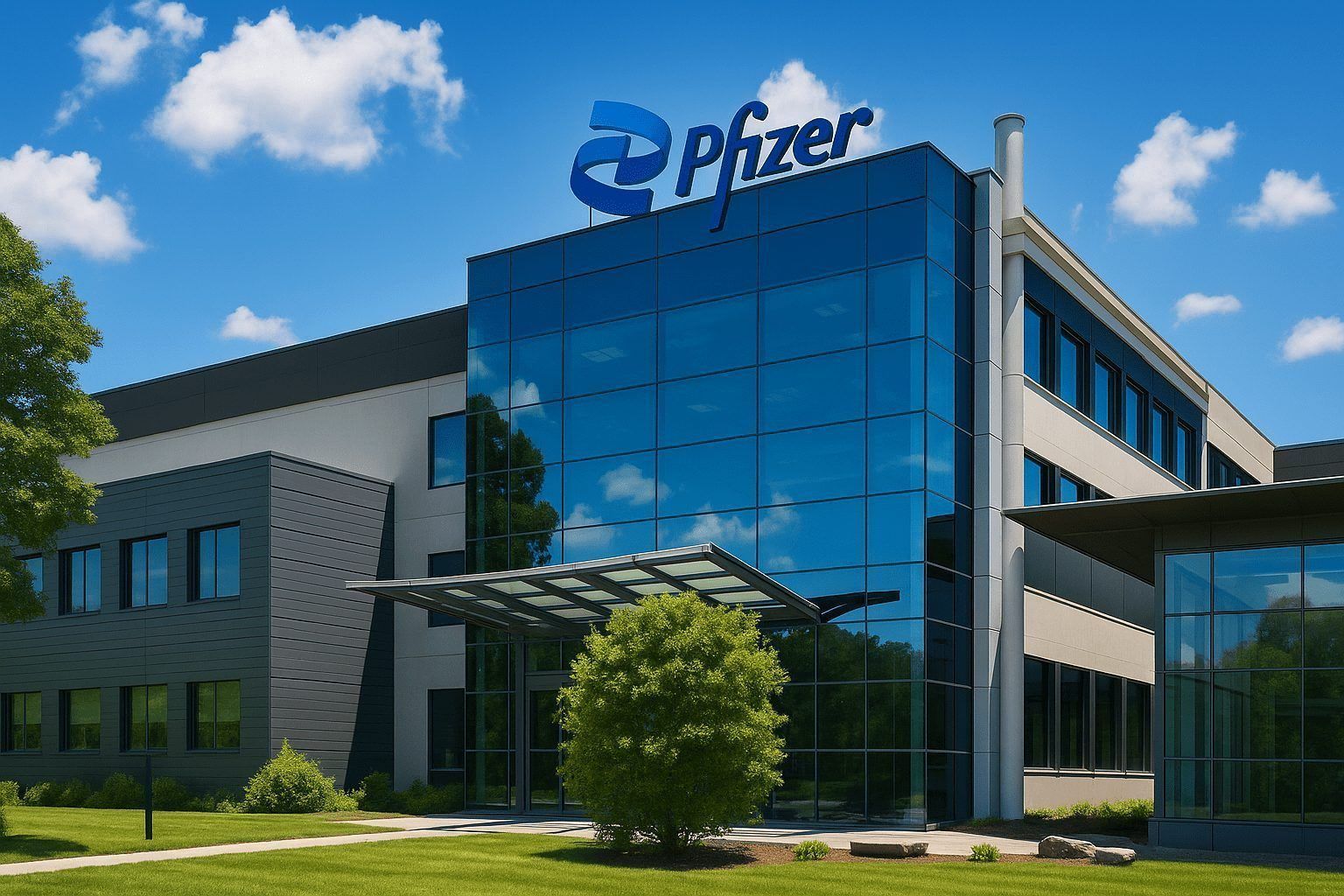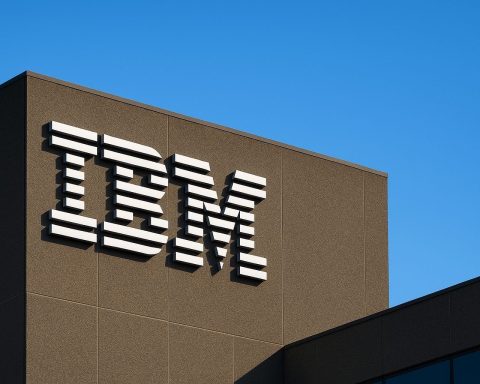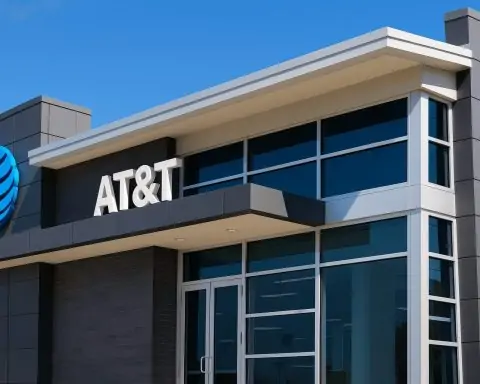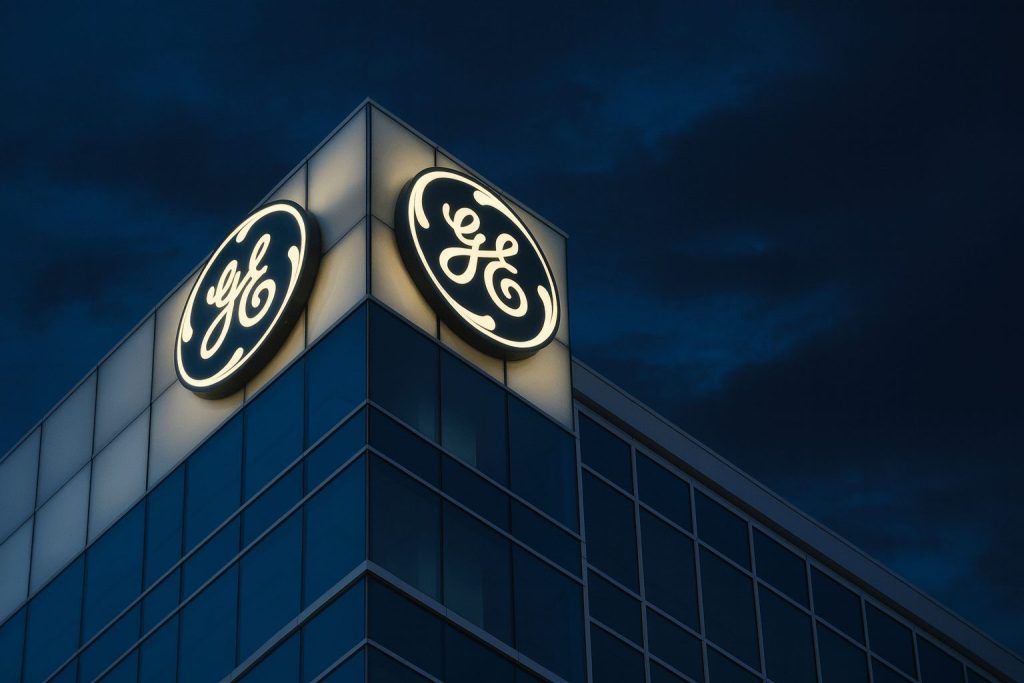Pfizer stock heads into the weekend trading just above $25, with investors digesting a busy week of news: a strong Q3 earnings beat, a fresh FDA cancer-drug approval, completion of a multi‑billion‑dollar obesity deal, a new $6 billion bond issue – and even a headline‑grabbing bird flu case that once again reminds markets of Pfizer’s role in vaccines and antivirals. [1]
Pfizer stock price today: where PFE stands on November 22, 2025
U.S. markets are closed today (Saturday), so the latest full trading session for Pfizer Inc. (NYSE: PFE) is Friday, November 21, 2025:
- Last close:$25.04 per share
- Daily move: up about $0.64 (+2.6%) on Friday
- Intraday range: roughly $24.59–$25.52
- Volume: around 72–73 million shares, well above recent averages [2]
Data providers like IndMoney and Stockstelegraph show PFE essentially flat in after‑hours trading near $25.10, confirming that Friday’s rally has held into the weekend. [3]
From a bigger-picture perspective:
- 52‑week range: about $20.92 (low) – $27.69 (high) [4]
- 1‑year performance: roughly ‑12%, versus the S&P 500 up about 11% over the same period
- Year‑to‑date performance: around ‑7–8% [5]
Valuation screens show Pfizer trading on a low‑teens P/E multiple – MarketBeat’s snapshot uses about 13.3x, while Stockstelegraph’s trailing figure is closer to 14.5x, depending on the earnings base. [6]
That relatively modest valuation, combined with a dividend yield near 6.9–7.0%, is central to today’s bullish and income‑oriented commentary around the stock. [7]
The biggest fresh Pfizer news for November 22, 2025
1. Pfizer completes a $6 billion bond deal across long maturities
Late Friday, and highlighted in coverage today, Pfizer announced it has completed a $6 billion public notes offering across several maturities running from 2027 out to 2065. [8]
According to SEC‑filing coverage from Investing.com:
- The company issued a mix of floating‑rate and fixed‑rate notes, including:
- Floating‑rate notes due 2027
- Fixed‑rate notes maturing in 2027, 2030, 2032, 2035, 2055 and 2065, with coupons in roughly the 3.9%–5.7% range
- The deal was done off Pfizer’s existing shelf registration and under a long‑standing indenture, with major banks such as Citigroup, Deutsche Bank, J.P. Morgan and Mizuho acting as underwriters. [9]
The same article notes that Pfizer:
- Has maintained dividend payments for 55 consecutive years, and
- Currently offers a dividend yield just under 7% (about 6.87%) at current prices. [10]
For investors, the bond sale matters because it:
- Helps fund recent and future dealmaking, including Pfizer’s obesity‑drug ambitions
- Slightly adds to leverage, but still within what analysts generally view as a manageable balance sheet for a $140+ billion pharma giant
2. Metsera obesity deal now closed – and the bidding war is over
The same SEC‑filing coverage confirms that Pfizer has now closed its acquisition of obesity‑drug developer Metsera in a transaction valued at about $7 billion in cash, plus contingent value rights (CVRs) linked to future milestones. [11]
Earlier in November, Reuters and other outlets chronicled an intense bidding war in which:
- Pfizer had initially agreed to pay up to $7.3 billion for Metsera in September
- Novo Nordisk later lobbed a $10 billion rival bid, triggering lawsuits from Pfizer alleging antitrust concerns and attempts to stall competition in GLP‑1 obesity drugs [12]
- Reports from outlets such as The Straits Times and Hindustan Times then indicated Pfizer ultimately clinched the deal, with valuations described around US$10 billion including potential extras, before Novo withdrew its offer after U.S. FTC feedback. [13]
The Metsera acquisition is central to Pfizer’s plan to rebuild its growth engine around obesity and metabolic disease, an area forecast to be a US$100 billion market by 2030. [14]
Pfizer’s CFO Dave Denton has publicly tied the deal to a broader obesity strategy and has signaled that the company is reserving roughly $5 billion for additional deals, even after closing Metsera. [15]
3. Institutional investors quietly add to PFE
Several 13F‑driven stories on November 22 show institutional money stepping up its exposure to Pfizer:
- MUFG Securities Americas Inc.
- Increased its stake by about 25.6% in Q2, adding 25,689 shares to reach 126,004 shares
- The position is valued around $3.05 million, based on the latest filing
- The same piece reiterates Pfizer’s consensus “Hold” rating and an average Wall Street target price of roughly $28.28 per share. [16]
- Journey Strategic Wealth LLC
- Boosted its holdings by 72.2%, buying 20,630 shares to reach 49,185 shares worth about $1.19 million. [17]
- Evelyn Partners Investment Management Services Ltd
- Lifted its Pfizer stake by nearly 590%, to 20,701 shares valued around $482,000. [18]
These moves are based on Q2 data but are being reported now, giving investors an updated view of how institutional owners – which collectively hold around two‑thirds of the float – are positioning in PFE. [19]
4. Top‑stock lists and beginner‑investor pieces spotlight Pfizer
Pfizer also features in several fresh stock‑picking and educational articles dated November 22:
- A Finviz‑syndicated article, “2 Healthcare Stocks for Beginner Investors With a 20‑Year Time Horizon,” highlights Pfizer alongside Viking Therapeutics as a long‑term play, citing its large‑cap stability and rich dividend. [20]
- A widely syndicated Motley Fool/AOL piece framed PFE as a “7%-yielding dividend stock” entering an “exciting new phase”, pointing to the Metsera deal, oncology pipeline and cost‑saving program as reasons income investors are paying attention. [21]
- MarketBeat’s “Top Pharmaceutical Stocks to Keep an Eye On – November 22” list includes Pfizer among large‑cap pharma names to watch, referencing its diversified portfolio and ongoing pipeline catalysts. [22]
Separately, a recent analysis on Yahoo Finance argued that Pfizer’s AI‑driven R&D revamp and cash‑flow prospects leave the stock trading at a nearly 60% discount to its estimated fair value on a discounted cash‑flow basis, reinforcing the “value + dividend” narrative around PFE. [23]
5. First fatal human H5N5 case – health scare keeps vaccine names on radar
Today’s broader health‑sector news includes a first-ever fatal human case of H5N5 bird flu in Washington state.
Benzinga reports that:
- An older resident with underlying conditions died after contracting the H5N5 strain
- Officials believe exposure likely came from a backyard flock of domestic birds
- Health authorities emphasize that the risk to the general public remains low, with no evidence of sustained human‑to‑human spread so far [24]
Even though this is primarily a public‑health story, Benzinga explicitly notes that headlines about emerging infectious diseases often put vaccine and antiviral makers such as Pfizer and Moderna back on traders’ radar, given their mRNA and antiviral platforms. [25]
Why Pfizer stock rallied on Friday: three main drivers
Friday’s 2.6% jump in PFE didn’t come out of nowhere. Several catalysts have been building over the past few weeks.
1. Q3 2025 earnings beat and raised guidance
On November 4, Pfizer reported Q3 2025 results that beat expectations and raised its full‑year profit outlook: [26]
- Revenue: $16.65 billion, down about 6% year‑on‑year as COVID product sales continue to normalize
- Adjusted diluted EPS:$0.87, down vs. last year but ahead of consensus estimates
- Full‑year 2025 guidance:
- Revenue reaffirmed at $61–64 billion
- Adjusted EPS guidance raised and narrowed to $3.00–$3.15 (from $2.90–$3.10)
- Management highlighted:
- $7.2 billion invested in internal R&D in the first nine months of 2025
- A drive to achieve about $7.2 billion in net cost savings by 2027
- $7.3 billion returned to shareholders via dividends in the first nine months alone
The market read this as evidence that Pfizer is stabilizing through the post‑COVID comedown, while squeezing costs and shifting capital to higher‑growth areas like oncology and obesity.
2. New FDA approval in bladder cancer
On November 21, Pfizer announced that the U.S. FDA has approved the combination of PADCEV® (enfortumab vedotin) plus Keytruda® (pembrolizumab) for certain muscle‑invasive bladder cancer patients who are ineligible for cisplatin‑based chemotherapy, as a regimen that spans before and after surgery. [27]
The approval:
- Builds on the oncology platform Pfizer acquired with Seagen
- Deepens Pfizer’s presence in genitourinary cancers, one of its core oncology areas
- Adds another potential non‑COVID growth driver over the coming years
A Friday recap piece from TS2.tech explicitly linked Pfizer’s stock move to this FDA win, the obesity pivot via Metsera, and the nearly 7% dividend yield as the key themes behind the rally. TechStock²+1
3. MarketBeat notes heavy volume and confirms “Hold” consensus
MarketBeat’s Friday article, “Pfizer (NYSE: PFE) Trading Up 2.5% – Time to Buy?”, underscores just how strong the move was:
- Shares traded as high as $25.52, closing near $25.02
- Volume ran about 41% above the average session volume
- Key metrics cited:
- Market cap around $142 billion
- Debt‑to‑equity about 0.65
- P/E roughly 13.3x and PEG near 0.81
- 68% institutional ownership [28]
On the Street, the stock still carries a consensus “Hold” rating, with:
- Roughly 2 Strong Buy, 4 Buy, 12 Hold and 1 Sell recommendations, and
- An average price target in the high‑$20s (around $28–$29), implying mid‑teens upside from current levels. [29]
Dividend, valuation and what today’s news means for income investors
A ~7% yield – but with a high payout ratio
Pfizer pays a quarterly dividend of $0.43 per share, or $1.72 annually, which at roughly $25 per share works out to a yield just under 7%. [30]
Several recent pieces frame this yield as both attractive and potentially fragile:
- MarketBeat tracks Pfizer’s dividend payout ratio at around 100% of current earnings, meaning essentially all profits are returned to shareholders. [31]
- A Motley Fool article titled “Is Pfizer’s 6.9%-Yielding Dividend Still Safe?” (November 20) notes this high payout and examines whether cost cuts, the pipeline and post‑COVID stabilization are enough to support it long term. [32]
Today’s $6 billion bond issuance adds another wrinkle. While the company’s strong balance sheet can likely handle the extra debt, the move signals that Pfizer is funding both rich dividends and heavy dealmaking, rather than relying purely on organic cash flow. [33]
For income investors, the message from today’s news flow is:
- The dividend is still intact and historically well‑supported – Pfizer has paid one for over half a century
- Yet the payout ratio and higher interest expenses mean future dividend growth (or even the current level) will depend heavily on:
- Successful integration and monetization of Metsera
- Execution in oncology and other non‑COVID franchises
- The pace of cost savings and margin recovery
Is Pfizer stock a bargain or a value trap right now?
Different research shops are looking at the same data and drawing cautiously optimistic – but not euphoric – conclusions.
- 24/7 Wall St. pegs the consensus 12‑month price target around $28.60, roughly 16% above today’s price, and its own model suggests PFE could trade in the low‑$30s by 2025–2030 if earnings and valuation multiples cooperate. [34]
- A Yahoo Finance DCF analysis recently estimated that PFE is trading at nearly a 60% discount to intrinsic value, factoring in long‑term cash flows from oncology, obesity and other non‑COVID lines. [35]
- On the flip side, some “stocks to sell” columns over the past month have flagged Pfizer’s slow revenue growth, lingering COVID drag and intense obesity competition as reasons the stock may remain range‑bound despite its yield. [36]
Today’s updates – especially the completed Metsera deal, the $6 billion bond sale, and renewed attention from institutional buyers – reinforce a narrative of Pfizer as:
A high‑yield, blue‑chip pharma giant trying to pivot from pandemic windfall to a new growth chapter in obesity and oncology, while investors debate whether the generous dividend compensates for execution risk.
Whether that makes PFE a bargain or a value trap still depends on your risk tolerance, time horizon and view on the pipeline.
Key risks investors should keep in mind
Even amid today’s upbeat headlines, several ongoing risks hang over Pfizer stock:
- COVID revenue decline
COVID products like Comirnaty and Paxlovid now contribute much less than at the pandemic peak, with sales falling steeply year‑on‑year and vaccine recommendations narrowed mainly to older and high‑risk adults. [37] - Obesity competition and regulatory scrutiny
- Novo Nordisk and Eli Lilly still dominate obesity GLP‑1 drugs, and regulators have already scrutinized the Metsera bidding war. [38]
- If Metsera’s pipeline disappoints or faces safety issues, Pfizer’s obesity bet could deliver less growth than bulls expect.
- High dividend payout and rising debt
With a payout ratio near 100% and now $6 billion more in long‑dated notes, Pfizer has less flexibility if earnings undershoot guidance or if interest rates stay elevated. [39] - Pipeline and regulatory risk
Like all big pharmas, Pfizer faces:- Possible trial failures or safety signals in its late‑stage programs
- Patent cliffs and generic competition in key products over time
- Event‑driven volatility from health scares
The new H5N5 bird flu case underscores that infectious disease headlines can create short spikes in vaccine‑maker stocks – in both directions – even when authorities stress that risk to the public is low. [40]
Quick FAQs about Pfizer stock today (22 November 2025)
What is Pfizer’s stock price today?
As of the close on November 21, 2025, Pfizer stock is $25.04, with after‑hours data pointing to trade near $25.10 as the weekend begins. [41]
How much is Pfizer’s dividend yield now?
Pfizer pays an annual dividend of $1.72 per share, implying a yield of about 6.9–7.0% at current prices. [42]
What are analysts saying about Pfizer stock?
Wall Street’s consensus rating is “Hold”, with a 12‑month average price target around $28–$29 – modest upside from today’s level. [43]
Why is Pfizer in the news today?
Key headlines for November 22, 2025 include:
- Completion of a $6 billion multi‑maturity bond offering
- Confirmation that Pfizer has closed its multi‑billion‑dollar acquisition of obesity‑drug developer Metsera
- Several institutional investors increasing their PFE stakes
- New stock‑picking articles highlighting Pfizer as a long‑term, dividend‑rich healthcare play
- A first fatal human H5N5 bird flu case in Washington state, bringing vaccine and antiviral makers back into the conversation [44]
Is this investment advice?
No. This article summarizes recent news and publicly available analysis about Pfizer stock as of November 22, 2025. It is for informational purposes only and should not be taken as personalized financial advice. Always do your own research or consult a licensed adviser before making investment decisions.
References
1. www.businesswire.com, 2. stockanalysis.com, 3. www.indmoney.com, 4. www.stockstelegraph.com, 5. www.stockstelegraph.com, 6. www.marketbeat.com, 7. www.marketbeat.com, 8. www.investing.com, 9. www.investing.com, 10. www.investing.com, 11. www.investing.com, 12. www.reuters.com, 13. www.straitstimes.com, 14. 247wallst.com, 15. www.investing.com, 16. www.marketbeat.com, 17. www.marketbeat.com, 18. www.marketbeat.com, 19. www.marketbeat.com, 20. finviz.com, 21. www.aol.com, 22. www.marketbeat.com, 23. finance.yahoo.com, 24. www.benzinga.com, 25. www.benzinga.com, 26. www.businesswire.com, 27. www.pfizer.com, 28. www.marketbeat.com, 29. www.marketbeat.com, 30. www.marketbeat.com, 31. www.marketbeat.com, 32. www.fool.com, 33. www.investing.com, 34. 247wallst.com, 35. finance.yahoo.com, 36. www.investing.com, 37. www.reuters.com, 38. www.reuters.com, 39. www.investing.com, 40. www.benzinga.com, 41. stockanalysis.com, 42. www.marketbeat.com, 43. www.marketbeat.com, 44. www.investing.com







